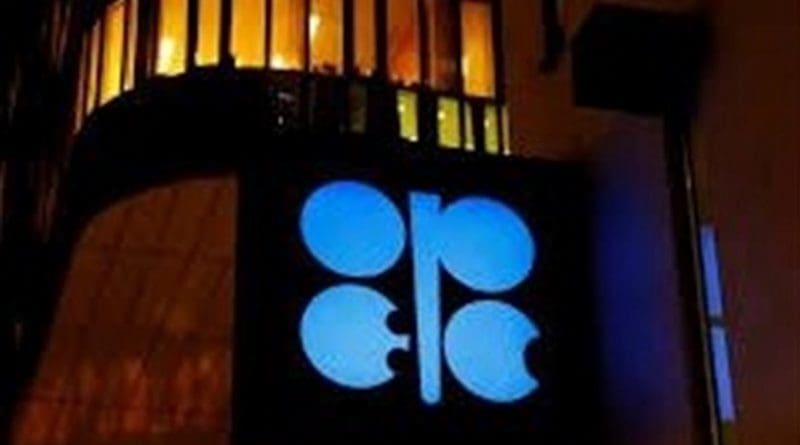Oil Prices Hold Steady Following OPEC+ Deal – OpEd
By Arab News
By Cornelia Meyer*
The deal reached by OPEC+ — a coalition of OPEC members and 10 other allies — at the beginning of the month had pushed the oil price to the mid 60-dollar range per barrel, where it has comfortably held since then. The price of Brent briefly reached a low of $63 last Wednesday, when US crude inventories surprisingly rose by 822,000 barrels per day (bpd).
By Friday, the price had rallied to a high of $65.63 per barrel on the news that the US and China were close to reaching an agreement on phase one of their trade deal. Some profit-taking brought the price down marginally and it reached $65.20 in Monday’s early European trading.
It was an announcement by US President Donald Trump that sent markets soaring. The US will not now hike the tariffs levied on $250 billion-worth of Chinese imports from 25 percent to 30 percent, which would have come into effect this week. Furthermore, it will half tariffs in several categories. In return, China has pledged to buy big volumes of US agricultural products, protect US intellectual property rights and allow more access to its financial services sector, according to the Wall Street Journal.
This is good news for oil demand going into the first quarter. In last week’s December Oil Market Report, the International Energy Agency (IEA) had forecast 2020 demand at 1.2 million bpd. We can expect phase one of the US-China trade deal to provide a stimulus to oil demand growth. The International Maritime Organization’s low-sulfur regulations come into effect on Jan. 1, providing a further boost to demand from refineries in order to produce the required specification of fuel oil used in the shipping industry.
The demand outlook seems more positive than a few weeks ago. On the supply side, the IEA still expects incremental growth of 2.1 million bpd from non-OPEC producers. There is some uncertainty over how much US shale production will increase, but the numbers from Norway, Brazil and Guyana look promising (the IEA lowered its non-OPEC supply forecast for 2020 by 100,000 bpd).
The OPEC+ deal has to be credited with balancing the market. It increased production cuts by 500,000 bpd to 1.7 million compared to June 2019. And Saudi Arabia promised a further 400,000 bpd in cuts if OPEC members comply with their quotas. The fact that OPEC+ carved out distillates rendered complicated the calculations of how much of the incremental decrease in supply we should expect from OPEC+ during the first quarter. The IEA is of the opinion that full compliance by OPEC+, in conjunction with the promised additional cuts from Saudi Arabia, would result in taking a de facto 500,000 bpd of crude out of the market during the first quarter of 2020. The agency expects a supply overhang of 700,000 bpd when the OPEC+ supply cut is held against the non-OPEC supply increases.
The possibility of a phase one agreement in the US-China trade negotiations, combined with better-than-expected economic numbers from China, render the outlook for the first quarter of 2020 more positive. Bank of America Merrill Lynch is not ruling out a price hike to $70 during the first quarter. However, its average price forecast for 2020 stands at $60 per barrel.
We should also not forget that surprises are always possible. The current numbers stand against the backdrop of a fall in production from Venezuela and Iran of about 3 million bpd since January 2017 due to a combination of economic deterioration and US sanctions. Nigeria and Libya have also been good for many surprises on the up as well as the down sides, depending on how their domestic situations are developing at any given time.
Predicting oil prices always has something of stargazing about it. What we can say though is that the OPEC+ deal gave the oil markets a lift. Any resolution of trade conflicts would be positive for the global economy and what is good for the global economy is good for oil demand. In the meantime, it will be important that the OPEC+ member countries comply with their quotas.
• Cornelia Meyer is a business consultant, macroeconomist and energy expert. Twitter: @MeyerResources

